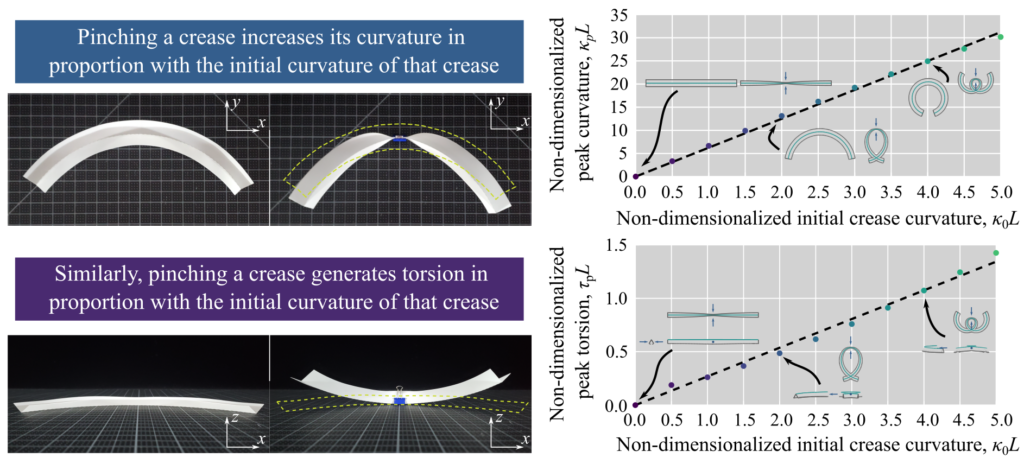Shape-morphing origami with low-complexity pinches

Folding offers a controlled method of changing the shape of a thin sheet, and subsequently, the functional properties of the structure. With curved-crease origami, the shape of the sheet can be further manipulated after folding through localized changes in the dihedral angle of the crease (i.e., pinches). With these low-complexity actuations, the crease will bend and/or twist with ease.
We have found a link between the crease pattern of origami and the degree of bending and twisting generated from a pinch. Creases with greater curvature tend to bend and twist to a greater degree upon pinching. The number of creases also matters, where origami with an even number of creases will tend to twist more than those with an odd number of crease. When the spacing between creases is larger, greater bending tends to occur. The stiffness of the sheets had little effect on both the bending and twisting of origami structures upon pinching.
Pinching can be used to morph the global geometry of origami with just a local change in shape, suggesting applications in systems where large shape changes are needed with as little input complexity as possible, such as a dynamic façades, origami grippers, or shape-morphing exoskeletons.
Related publications
Bending and twisting with a pinch: Shape morphing of creased sheets